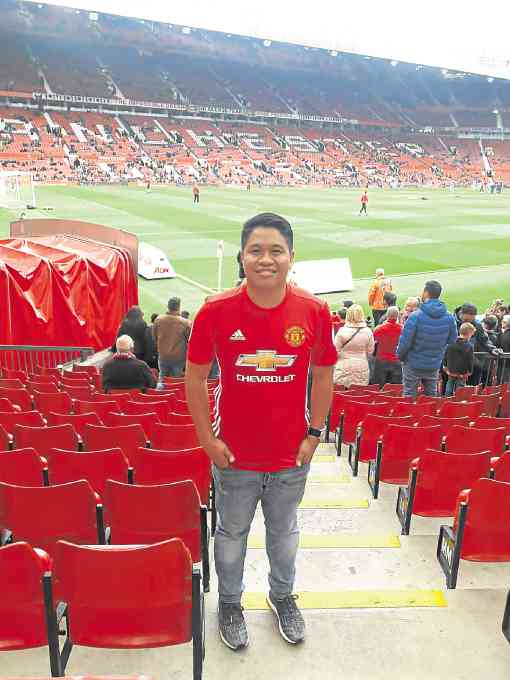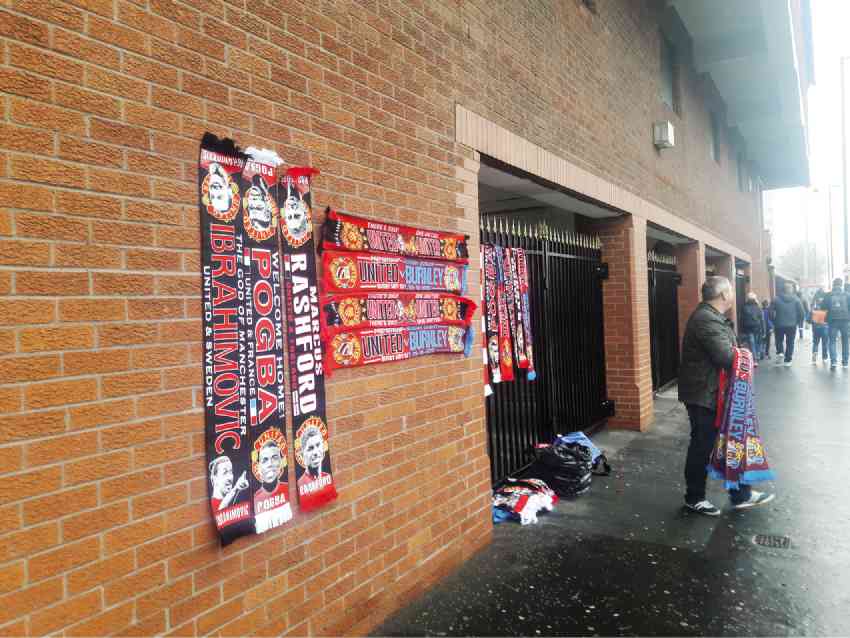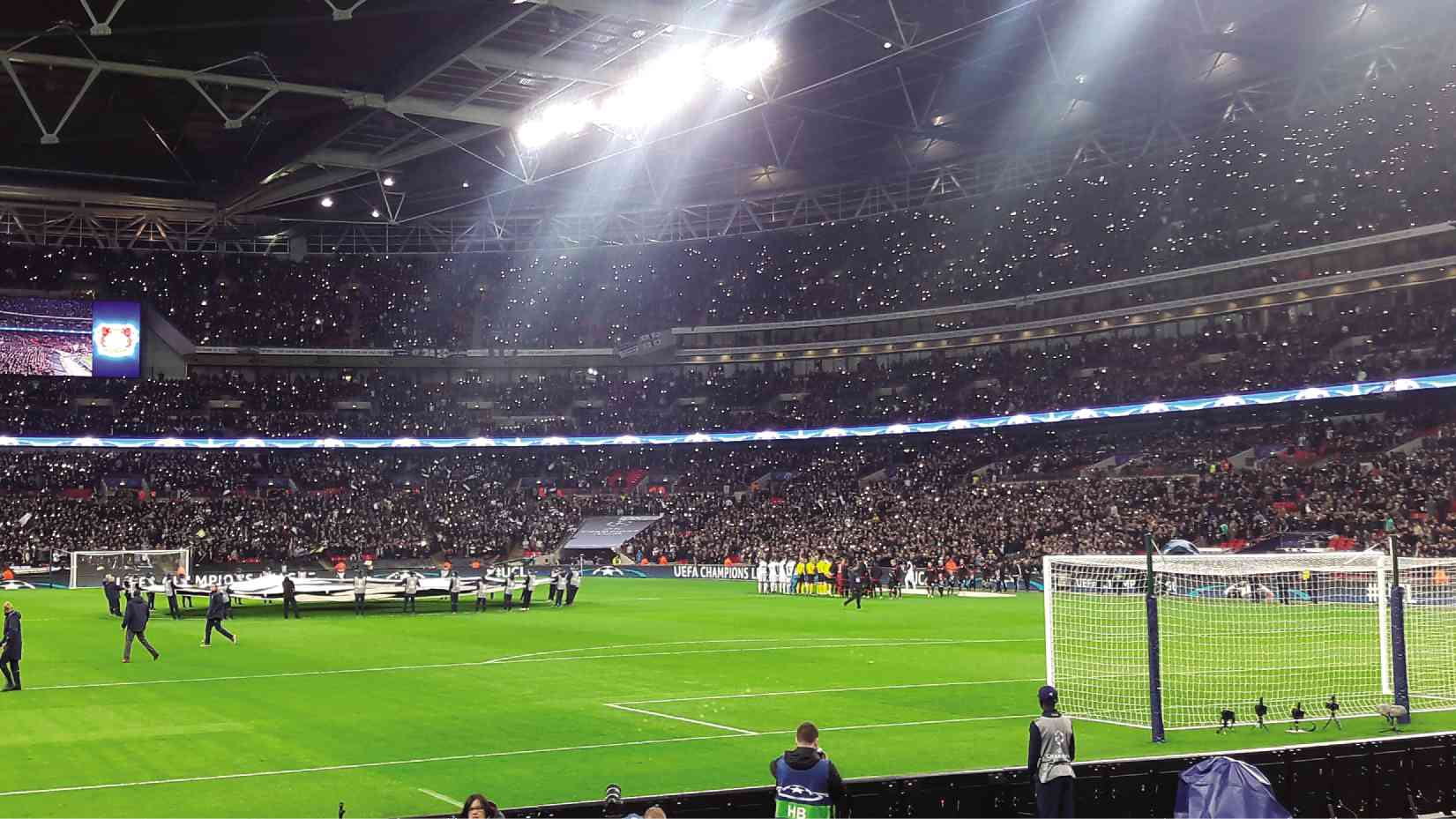My Football Pilgrimage
Just like any another sport, football can be cruel. As I sat in the cold outside the box office of Arsenal’s 60,000-seater Emirates Stadium in London one evening late last month, I couldn’t help but be reminded of the pain the Beautiful Game brings even to its most loyal followers.
It wasn’t about the result of a match—I wasn’t even inside the stadium. For someone who gets into football matches for free back home because of work, this was definitely a different challenge. I was no longer a reporter. I was a fan whose precious ticket for the fourth-round English Football League Cup match between Premier League club Arsenal and Championship side Reading had just been blocked.
My football pilgrimage had gotten off on the wrong foot.
I was in the same spot a few hours earlier, giddy that even though the box office indicated the match was already sold out, I managed to secure tickets from a guy in the area. It was expensive (£50 or P3,060 each), but I didn’t mind. I was about to experience English football live for the first time. I got too excited—and reckless.
“We always tell the fans to buy tickets only from the club,” said an Arsenal staffer. “There’s a good number of pubs down the street if you want to watch the match there.”
I took the reminder to heart. Thinking about the scalpers back in Manila, I told myself they’re actually so much better than their kind in London because at least you’re sure you’d be able to get in.
There was a glimmer of hope as we approached the box office 15 minutes after kickoff. For reasons unknown to us, there were still a couple of tickets left. We snapped them up at £10 and a few minutes later, we were eight rows behind the Reading bench.
I marvelled at the atmosphere, the pace and quality of the game (Arsenal plays slick football) and of course, the fans. Alex Oxlade-Chamberlain, a sturdy, muscular winger scored a brace for the home side, much to the delight of Arsenal’s legendary French manager Arsene Wenger.
Heading back to South London, where we were staying, was difficult (Emirates is in North London). With no car, public transport was the only choice. The nearest Underground (subway) station that was open for the night was a good one-kilometer walk from Emirates. As we approached the station, the queue crawled up to the entrance, the scene reminding me of long lines in MRT stations back home. It took almost an hour to get on the train, and I could only imagine the ordeal fans go through to support their club.
Next stop: Manchester
The next stop of my journey was Manchester, the home of “The World’s Greatest Football Club,” Manchester United. It takes two hours to travel by train from London to Manchester. Being a United supporter, visiting United’s home ground, Old Trafford, was on my bucket list. Tickets for United were even more difficult to get, especially since that day’s schedule was an English Premier League game. But Azkals goalkeeper Neil Etheridge was kind enough to request his friend, United defender Chris Smalling, for complimentary tickets, sparing me from another costly trip.
It was a gloomy Saturday (like most days of the year in London), but the area around Old Trafford was buzzing with activity three hours before kickoff for the EPL game between Manchester United and Burnley. Vendors were selling match-day scarves, pins and other souvenir items (Tip: Buy after the match when prices are much lower). A friend who lived in Manchester told me to sample burger-and-chips—a tradition for first-timers. There was just something mythical about Old Trafford. The place had so much history being home to English football’s most successful club.
The stadium was magnificent. I soaked in the atmosphere. The crowd was alive with chants for every player who came out for warmups. We were seated in the Friends and Family stand in the corner of the stadium, in between the famous Stretford End (the bleachers behind the goal) and the Sir Bobby Charlton Stand (East Stand). Stretford End was a sight to behold. The fans’ chants grew vociferous with every call that didn’t go United’s way and they clapped and shouted in unison with every United chance or every sequence of good play for the home side. It was surreal being one of the 75,325 people who watched the game live on that day. Unfortunately, despite having 37 shots, the Reds were held to a scoreless draw by Burnley. The result was frustrating for the home crowd, but you hardly felt it as soon as the players acknowledged them after kickoff. I can only imagine this place when United loses big, particularly to rivals like Manchester City or Liverpool. It must feel like a funeral march.
Most expensive player
On board the tram back to the City Centre, it seemed that almost everyone had an opinion on the match. Random strangers shared what they thought of United’s performance, particularly their misfiring Swedish striker Zlatan Ibrahimovic and midfielder Paul Pogba, the world’s most expensive player.
Manchester is also the home of the National Football Museum. It has memorabilia, such as Diego Maradona’s Argentina jersey when he scored the “Hand of God” goal in the 1986 World Cup, as well as souvenirs from the 1966 World Cup won by England.
Having been to two matches already, one of the few things I noticed was the large number of youngsters in and around the stadium. Football is a family affair in England and fandom is passed on to generations. If your great grandfather is a United fan, chances are you will still be a United fan. I am also fascinated by how quick the stadium gets filled. It seemed like everyone in town is there to watch the match. Former Azkals skipper Rob Gier, who played for Wimbledon in the early 2000s, offered an explanation: “People here work for five days and look forward to the match on the weekend. That’s just life here. It’s part of the culture.”
Back in London, I toyed with the idea of going on a stadium tour of Wembley, the home of English football. But a quick check indicated that Tottenham Hotspur would be playing their Champions League game against German side Bayer Leverkusen there that week. I couldn’t deny myself the chance to watch Champions League football, the competition for Europe’s best clubs—and at Wembley. The Brazilian great Pele calls Wembley “The Cathedral of Football.” Wembley, he said, “is the capital of football and it is the heart of football.”
Champions League football
Once again, I turned to a scalper for a ticket, but this time I made sure he was there when I entered the stadium. I wanted to make sure the ticket wasn’t blocked. I sat near the Leverkusen supporters. I felt my spine tingle as the players came out to the Champions League hymn. I used to stay up in the wee hours of the morning watching Champions League football and now I was experiencing it live. Wembley was majestic with 85,000 souls inside it. The Leverkusen supporters were full of energy, waving flags, singing and chanting throughout the match, boosting the visitors to a 1-0 win.
The final stop of my pilgrimage was at League One side Walsall’s home ground, Banks Stadium, to watch Etheridge play for the Saddlers. From London, it took me an hour to reach Birmingham, where I transferred to a train that would take me to Banks Stadium. I was surprised to see that Villa Park, the home of Aston Villa, was just a few train stations away from Walsall’s ground. About 2,000 showed up for the first-round FA Cup match pitting Macclesfield Town and Walsall.
Save for a few shaky moments in the first half, Etheridge had a solid game, but the Saddlers suffered a 0-1 defeat. Neil said they’d get an average of 8,000 spectators for League One matches at home. Considering that Walsall is based in the West Midlands, where bigger clubs like Wolverhampton, Aston Villa, Birmingham, Coventry City and West Brom are based, its quite an impressive number.
I joined Etheridge on the two-and-a-half-hour drive back to London where he shared the ups and downs of a professional footballer (I’m saving it for another football story). It’s just the kind of story to cap the pilgrimage. Four matches, four different stadiums, four different competitions. This pilgrimage was one for the books.


